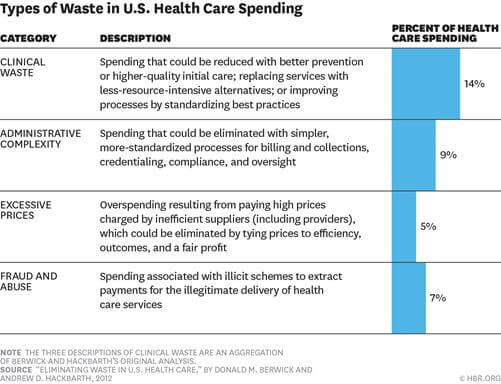A Penny Saved: How Innovative Health IT Can Save a Trillion Dollars
Here on the CNSI blog, we tend to talk a lot about how the U.S. can improve its health care system to provide better patient outcomes and lower costs. Often though, the scope of the issue can cloud understanding and stagnate progress. After all, national health care expenditure in the U.S. is almost $4 trillion dollars, a number very difficult to imagine let alone manage.
So where does all that money go? Well, most of it is put to good use—paying for patient treatments that range from every-day checkups to life-saving surgeries. While there are arguments over whether these treatments cost too much, the real issue is what economists call “wasteful spending.” By some estimates, wasteful spending accounts for a quarter of the national health care expenditure, or $1 trillion dollars.
Two researchers at Harvard Business Review recently took a deeper look at the categories of waste that make up that $1 trillion, and the results were astounding. The largest portion of the waste is what they deemed “clinical waste,” i.e., all things related to the actual treatment of patients. But the second biggest slice that pie is administrative complexity, which they explain as “spending that could be eliminated with simpler, more-standardized processes for billing and collections, credentialing, compliance and oversight.”
That description sounds quite familiar to us. CNSI solutions, especially in health IT, aim to accomplish those very goals. The sheer size of the task is daunting, but at the same time thrilling. The opportunity for innovation has the potential to create a significant impact on the American health care system.Two researchers at Harvard Business Review recently took a deeper look at the categories of waste that make up that $1 trillion, and the results were astounding. The largest portion of the waste is what they deemed “clinical waste,” i.e., all things related to the actual treatment of patients. But the second biggest slice of that pie is administrative complexity, which they explain as “spending that could be eliminated with simpler, more-standardized processes for billing and collections, credentialing, compliance and oversight.”
The Harvard researchers outline a number of economic suggestions for tackling wasteful spending, but finish the article with the following passage:
“Therefore, in addition to implementing everything that have been proven to work, the United States should create an environment that encourages innovations that can address areas of waste such as administrative complexity that known strategies cannot eliminate. Finding ways to address these challenges will help unleash unprecedented productivity increases in the health care system, extend the viability of the Medicare trust fund by years, allow employers to use money that would otherwise go to health care to raise wages, and, by reducing state and federal expenditures on health care, permit governments to lower taxes.”
There you have it. We’ll be busy taking up this challenge, but stop by Twitter and tell us what you think. Find us at @CNSICorp.